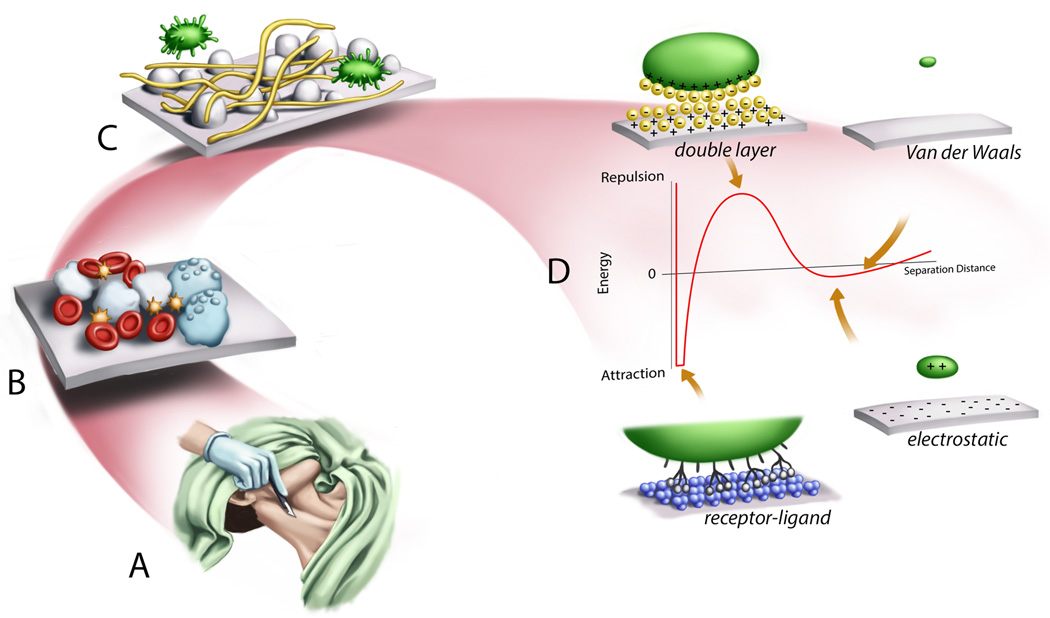Figure 1.
Illustration of the length-scale conceptualization of the pathogenesis of implantable device related infection. (A) Surgical incision and wound creation leads to continuity between sterile and non-sterile compartments of the body as well as inflammatory reaction. (B) Extracellular fluids and blood cells in the wound come into contact with the abiotic implanted material initiating both inflammatory and coagulation cascades. (C) Host proteins (e.g., fibrin, thrombin, albumin) also interact with the surface as well as bacteria leading to the development of a biofilm. (D) At the nano and sub-nanometer scale the interaction of a cell or molecule with a surface is governed by basic physiochemical properties. A particle approaching the surface by bulk transport may have an opposite or similar charge as the surface leading to electrostatic attraction or repulsion. In an aqueous environment a double layer of water molecules will develop on the charge surface, further contributing to the energy of interaction. Van der Waals forces will provide additional attractive forces. Finally, biological particles will have receptor-ligand interactions which provide strong and sometimes irreversible attractive interaction.

